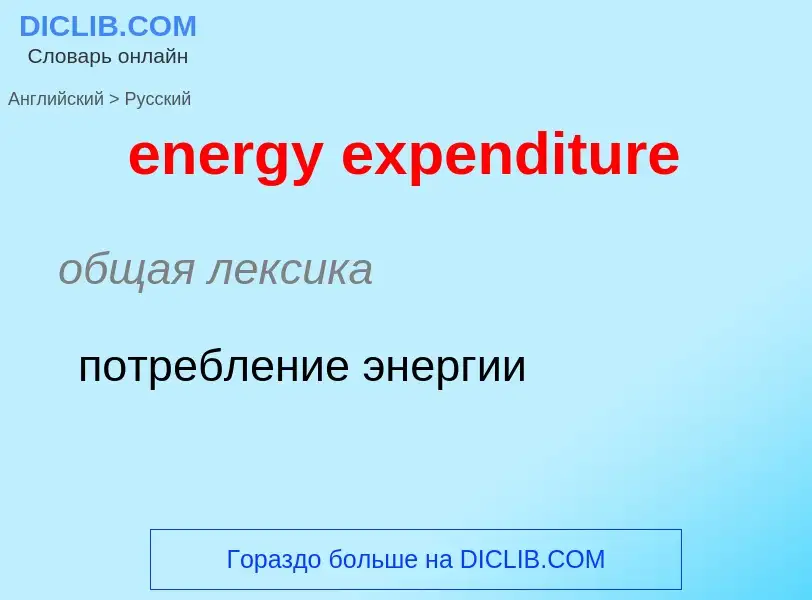Translation and analysis of words by ChatGPT artificial intelligence
On this page you can get a detailed analysis of a word or phrase, produced by the best artificial intelligence technology to date:
- how the word is used
- frequency of use
- it is used more often in oral or written speech
- word translation options
- usage examples (several phrases with translation)
- etymology
energy expenditure - translation to russian
общая лексика
потребление энергии
медицина
психическая активность
['enədʒilev(ə)l]
общая лексика
энергетический уровень
Definition
Wikipedia
Resting metabolic rate (RMR) is whole-body mammal (and other vertebrate) metabolism during a time period of strict and steady resting conditions that are defined by a combination of assumptions of physiological homeostasis and biological equilibrium. RMR differs from basal metabolic rate (BMR) because BMR measurements must meet total physiological equilibrium whereas RMR conditions of measurement can be altered and defined by the contextual limitations. Therefore, BMR is measured in the elusive "perfect" steady state, whereas RMR measurement is more accessible and thus, represents most, if not all measurements or estimates of daily energy expenditure.
Indirect calorimetry is the study or clinical use of the relationship between respirometry and bioenergetics, where the measurement of the rates of oxygen consumption, sometimes carbon dioxide production, and less often urea production is transformed to rates of energy expenditure, expressed as the ratio between i) energy and ii) the time frame of the measurement. For example, following analysis of oxygen consumption of a human subject, if 5.5 kilocalories of energy were estimated during a 5-minute measurement from a rested individual, then the resting metabolic rate equals = 1.1 kcal/min rate. Unlike some related measurements (e.g. METs), RMR itself is not referenced to body mass and has no bearing on the energy density of the metabolism.
A comprehensive treatment of confounding factors on BMR measurements is demonstrated as early as 1922 in Massachusetts by Engineering Professor Frank B Sanborn, wherein descriptions of the effects of food, posture, sleep, muscular activity, and emotion provide criteria for separating BMR from RMR.


![ν]]''}} ν]]''}}](https://commons.wikimedia.org/wiki/Special:FilePath/Atomic Absorption (hv corrected).png?width=200)
![[[Wavefunction]]s of a [[hydrogen]] atom, showing the probability of finding the electron in the space around the nucleus. Each stationary state defines a specific energy level of the atom. [[Wavefunction]]s of a [[hydrogen]] atom, showing the probability of finding the electron in the space around the nucleus. Each stationary state defines a specific energy level of the atom.](https://commons.wikimedia.org/wiki/Special:FilePath/Hydrogen Density Plots.png?width=200)
